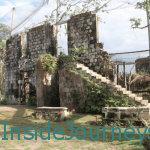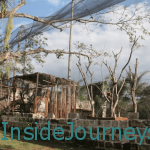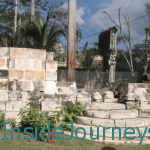Jamaica had a fantastic few weeks on American television when two reality shows, The Real Housewives of Atlanta and The Bachelor, filmed some of their episodes there. Although neither show appeals to me, I swallowed my distaste and allowed the storyline to take a backseat to the view unfolding on my television screen. I ended up catching more of The Bachelor than of the Housewives. Here are some of the places they featured (not in oder):
YS Falls, St. Elizabeth
The show centers around a young man who’s trying to find a marriage bride. In the episodes that were filmed in Jamaica, the prospective groom travels with one of the two female finalists to YS Falls. Located on a 2,00-acre spread in southwestern Jamaica, YS Estate and Falls is a former sugarcane and logwood tree (a natural dye) farm and privately owned stud farm. YS has its own waterfall – seven, to be exact – that reach to 120 meters with several natural pools.

The area surrounding the falls is lush and green. Visitors can swim, do canopy rides or just relax. There are also activities for children.


Good Hope Great House
I saw only a part of the episode that was shot at Good Hope Great House. When I tuned in, the couple was standing outside the house. Although the grounds are beautiful, I think the interior is even more stunning.



The Blue Lagoon
When they showed the couple at the Blue Lagoon, also called the Blue Hole, the popular local destination was unusually devoid of people but still recognizable. Located between the parishes of St. Ann and St. Mary, the Blue Lagoon, was not quite ready for international visitors when I visited a few years ago. It’s possible that the show could have rented it for filming.
It was great to see the Blue Lagoon on television. I was a little sad though as it’s one of those places that, given the choice, I’d keep for local use.
Do you ever go out of your way to watch a show that featured your country?
Linking this week with Travel Photo Thursday that Nancie of Budget Travelers Sandbox, Jan at Budget Travel Talk, Ruth at Tanama Tales, and Rachel at Rachel’s Ruminations.



















